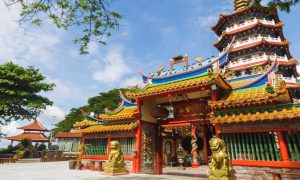Source: The Expat magazine June 2011
Get your free subscription and free delivery of The Expat
This article has been edited for ExpatGoMalaysia.com
Kuala Lumpur has many things going for it, both as a place to work and to live, but an efficient public transport system is not one of them. So inadequate is it, that fewer than one in five journeys is made on buses and trains. Compare that to Singapore, where public transport is used for nearly two thirds of all journeys, and Hong Kong, where the figure is closer to three quarters. One look at KL’s ever-worsening traffic jams is enough to confirm that the present situation is unsustainable. And with the population of the Klang Valley set to grow from six million now to ten million by the end of the decade, the need for a major shift from private to public transport is unarguable. Fortunately, the Government appears to recognise the seriousness of the problem, and has announced a raft of initiatives to deal with it, overseen by the recently formed Land Passenger Transport Commission (SPAD). The flagship project is the 150 kilometre Klang Valley Mass Rail Transit (MRT) network. A groundbreaking ceremony is due to be held in July this year, with the first line operational in January 2017, and the whole system by the end of 2020. SPAD’s Chief Executive, Mohd Nur Kamal, gave a stark warning: “Very simply, roads in Kuala Lumpur and the Klang Valley will be permanently gridlocked in the future if there is no MRT. To make this region attractive, we have to ensure efficient mobility. And to do this, we have to get at least 50 per cent of all journeys to be on public transport”.
So what can KL’s hard-pressed commuters expect from the new system? Well, so far only the preliminary alignment of the first line has been announced. If confirmed, it will have 35 stations, and cover a distance roughly 50 kilometres, from Sungai Buloh, in the north west, to Kajang, in the south east; passing through areas with a combined population of 1.2 million people. That includes several places popular with expats, such as Mutiara Damansara (The Curve), TTDI (by the market), One Utama, Pusat Bandar Damansara (by Jalan Maarof), and two stations in Bukit Bintang (at both ends of Jalan Bukit Bintang). The second line is expected to circle central KL, while details are sketchy about the third line, although it may end up linking KL to Port Klang. The overall strategy is for the MRT to both fill in the large gaps in the existing KTM, LRT and Monorail networks, as well as interchange with them, wherever possible. As yet, no exact price tag has been put on the ambitious project, but according to the latest unofficial estimates, it’s likely to be in excess of 50 billion ringgit. It is set to be the largest such scheme in Malaysia’s history, and given the tendency of ambitious infrastructure projects to overshoot their budgets, the affordability of the MRT has become a critical issue. More specifically, there are understandable worries that the project will end up benefiting well connected companies and individuals rather more than the travelling public. Transit, a public transport pressure group, has been one of the most vocal critics of the project. It claims the MRT is being rushed through without proper planning or consultation. Improving existing modes of public transport, it argues, would make better financial sense than building a whole new network. Transit spokesman Moaz Yusuf Ahmad called for a major rethink: “We have not rejected the MRT outright. We are concerned over the manner in which the project was introduced and the lack of data justifying the choice of the MRT. We would prefer to see the money being spent to improve public transport throughout Malaysia, rather than just the Klang Valley”.
To put the likely cost of the MRT into some sort of context, 10 billion ringgit was spent last year subsidising petrol prices. The Government has budgeted for a similar amount this year, but thanks to higher world oil prices, that’s certain to be overshot by several billion ringgit. It is a huge sum of money – more than enough to fund better public transport throughout Malaysia. SPAD believes too much has been made of the likely cost of the MRT, and not enough of its likely benefits. It claims the project will generate 130,000 jobs, push up property prices, boost economic and commercial activity, and help the environment. The headline cost may be offset too, with profits from commercial developments linked to new stations, as Hong Kong has done so effectively in the past. Probably the biggest challenge facing SPAD is social attitudes about public transport. One of the major criticisms levelled at the preliminary alignment of the first MRT line, is that it passes through several wealthy areas. In TTDI, where opposition to the project has been strongest, a common sentiment is that there is no need for public transport, because people in the area can afford cars. The status and self-worth afforded by car ownership is hugely important to Malaysians, and to be fair, many expats too. Where else in the world would people live in a modest apartment, in order to afford an expensive imported car?
A big effort is clearly being made not to repeat the mistakes of the past. The MRT is being seen as part of an integrated public transport network, not as an isolated operation. It’s to be hoped that major failures of joined-up thinking, like the Monorail stopping 500 metres from KL Sentral, will not be repeated. But even if all goes to plan, and the Klang Valley gets a world class public transport network by 2020, will it have enough users to justify all the effort, not to mention the vast expense? In the end, only if people learn to fall out of love with their cars, will the MRT prove to be a real light at the end of the (railway) tunnel.


















